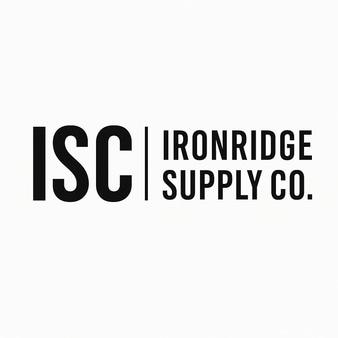Sticking with Performance: Choosing the Right Adhesives, Sealants, and Lubricants in Manufacturing
TOOLING & MACHINING


choosing the wrong product—or using the right one incorrectly—can lead to failures, production delays, and costly repairs. In this guide, we’ll break down the most common ASL types, their applications, and how to choose the right one for your operation.
Why ASL Products Are Critical to Industrial Operations
Unlike bolts or bearings, adhesives and lubricants often operate behind the scenes. But their performance directly impacts assembly quality, equipment longevity, and workplace safety.
Adhesives ensure strong, often invisible bonds between surfaces
Sealants protect against leaks, contamination, and environmental exposure
Lubricants reduce wear, overheating, and friction in moving parts
When chosen correctly, ASL products increase efficiency, reduce maintenance, and extend service life.
Types of Industrial Adhesives
1. Epoxy Adhesives
Epoxies are high-strength adhesives used for bonding metals, plastics, and composites.
Strengths: High durability, chemical and heat resistance
Use case: Structural bonding, potting electronics, surface repairs
Cure time: Varies from minutes to hours
2. Cyanoacrylates (Super Glues)
Fast-setting adhesives ideal for quick repairs and low-load applications.
Strengths: Instant bonding, clean application
Use case: Electronics, rubber seals, small plastic parts
Tip: Not ideal for porous surfaces or high impact
3. Polyurethane Adhesives
Flexible adhesives that perform well under dynamic stress.
Strengths: Flexibility, moisture resistance
Use case: Automotive assembly, vibration-prone parts
4. Acrylic Adhesives
Used where fast cure and impact resistance are needed.
Strengths: Excellent shear strength, weather resistance
Use case: Metal, glass, and composite bonding
Types of Sealants
1. Silicone Sealants
Flexible, waterproof sealants ideal for extreme temperature and UV exposure.
Use case: Electrical cabinets, doors, outdoor assemblies
Strengths: Excellent elasticity, chemical resistance
2. Polyurethane Sealants
Tough and abrasion-resistant, used in structural joints.
Use case: Construction, panel joints, automotive glazing
Strengths: Paintable, durable
3. Threadlockers
Liquid sealants that secure fasteners from vibration loosening.
Types:
Blue (removable)
Red (permanent)
Green (penetrating)
Use case: Bolted joints, machinery, engine parts
Types of Lubricants
1. Greases
Used in bearings, gears, and slow-moving parts. Stays in place, resists water and pressure.
Types: Lithium, calcium, synthetic, food-grade
Use case: Conveyor bearings, gear housings, motors
Tip: Choose NLGI grade based on viscosity needs
2. Oils
Best for high-speed components like spindles or chains.
Types: Mineral, synthetic, biodegradable
Use case: Hydraulics, chains, pneumatic systems
Tip: Match viscosity to OEM specs
3. Dry Lubricants
Graphite or PTFE-based, used where oil or grease would attract debris.
Use case: Locks, slides, conveyors, high-dust environments
Strengths: Clean, non-dripping
How to Choose the Right Product
1. Start with the Application
Understand what you're trying to accomplish—bonding, sealing, or lubricating—and the environmental conditions involved.
2. Match the Chemistry
Different materials require different ASL chemistries. For example, certain plastics degrade with strong solvents.
3. Consider Environmental Exposure
Will the part be exposed to heat, water, chemicals, or vibration? Choose products with compatible resistance.
4. Check Cure Times and Workability
For adhesives and sealants, ensure that cure time aligns with production flow. For lubricants, ease of application and reapplication matters.
5. Don't Mix Incompatible Materials
For example, mixing petroleum lubricants with synthetic greases can cause breakdown. Always clean old material before switching.
Best Practices for ASL Usage
Store products in a climate-controlled environment
Use dedicated applicators to avoid contamination
Always read the technical data sheet (TDS) and safety data sheet (SDS)
Train staff on application techniques and reapplication schedules
Record usage and reordering cycles for inventory control
Final Thoughts
In manufacturing, the smallest components often have the biggest impact. Adhesives, sealants, and lubricants may be invisible once applied—but their role in safety, performance, and efficiency is undeniable.
At Ironridge Supply Co., we offer a full line of industrial ASL products—from heavy-duty epoxies and silicone sealants to food-grade greases and anti-seize lubricants. Our team can help you select the right materials based on your process, environment, and performance demands.
🧴 Explore Industrial Adhesives, Sealants & Lubricants
🛠 Need Help Spec’ing a Lubrication Plan? Let’s Talk
